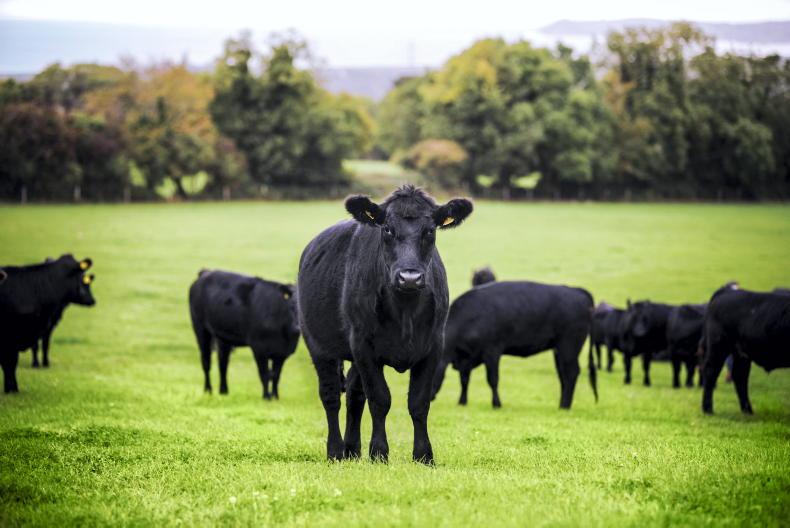The Irish Cattle Breeding Federation (ICBF) indexes of beef cattle are set for a major shake-up, with a number of key animal performance values changing.
These include an increase in the cost of calving difficulty, gestation length and mortality.
The economic impact of a heavier cow has also increased. This is due to a rise in the feed intake demand of a heavier cow, along with an increase in the land area required to feed these cows. The greenhouse gas emissions, or carbon footprint, also increases for heavier cows.
Age at slaughter is also being included for the first time, with earlier finishing breeds set to see their values increase the most.
Due to higher feed costs and overheads, a cost of €1.66/day has been included for each day that slaughter is delayed. For every day that slaughter is delayed, there is also an extra 4.56kg CO2 produced.
The economic value of docility has also tripled in the new index.
The replacement and terminal indexes were last updated in 2016 at the beginning of the Beef Data and Genomics Programme (BDGP). The updated indexes, which are set to be rolled out at the end of November, will include updated beef market prices and costs of production, along with carbon costings. It will also include a new age at slaughter trait, TB trait and carbon traits.
The changes will see a huge shift in the make-up of breeds being selected on replacement and terminal indexes, with traditional breeds now dominating the replacement list.
Battle of the breeds
A preliminary run of the figures in July saw the Belgian Blue breed lose out the most, with a harsher penalty on harder calving knocking Belgian Blues out of the top spots on the terminal index. The number of these bulls in the top 100 on the terminal index will fall in the new index. Charolais and Limousin bulls continued to make up the vast majority of the top 100 bulls on the terminal index.
The biggest changes in the preliminary run came in the replacement index where the Aberdeen Angus and Hereford breeds jumped up the list. In the July run, the number of Aberdeen Angus bulls in the top 100 on the replacement index moved from 27 to 41, while Hereford bulls increased from three to 13.
At the other end of the scale later maturing continental cattle like Charolais, Limousin and Simmental are set to lose out. The Charolais breed had 11 bulls in the top 100 on the old replacement index. This dropped to zero Charolais bulls in the July run. The number of Limousin bulls in the top 100 in July dropped from 19 to nine on the new replacement list.
On average Belgian Blue bulls lost €20 on their terminal index value while the average Charolais bull lost €12 on the terminal index, with calving difficulty being the biggest reason for the drop.
More movement in bull rankings is expected as ICBF continues to apply changes to the indexes ahead of the 21 November run.






 This is a subscriber-only article
This is a subscriber-only article









SHARING OPTIONS: